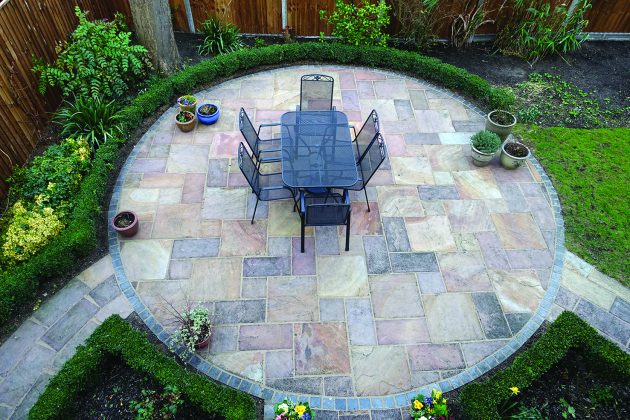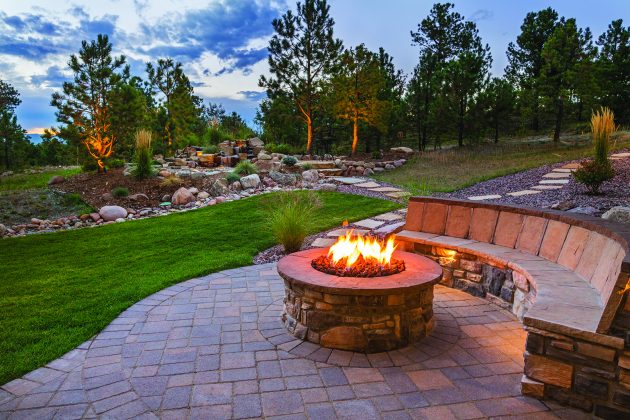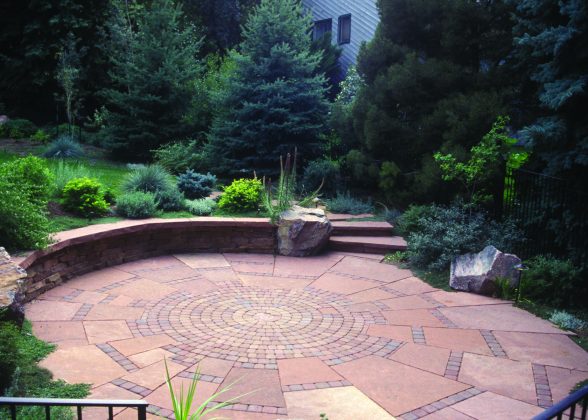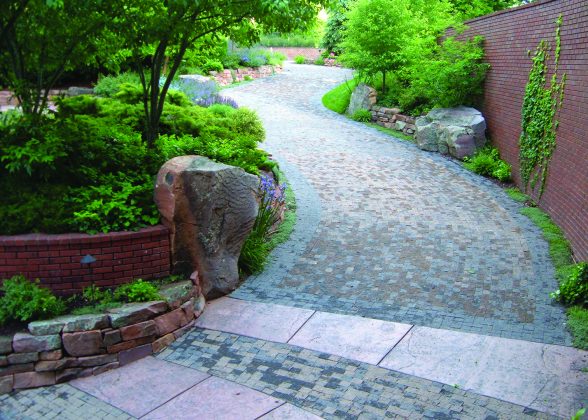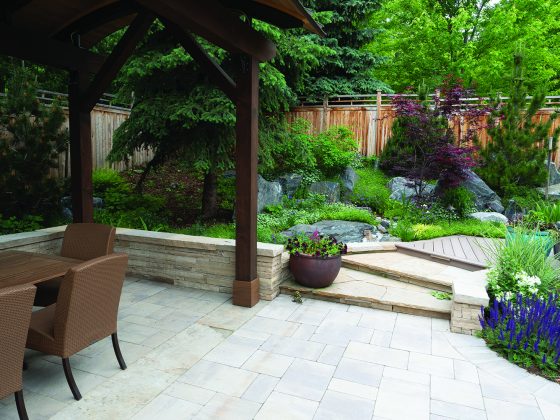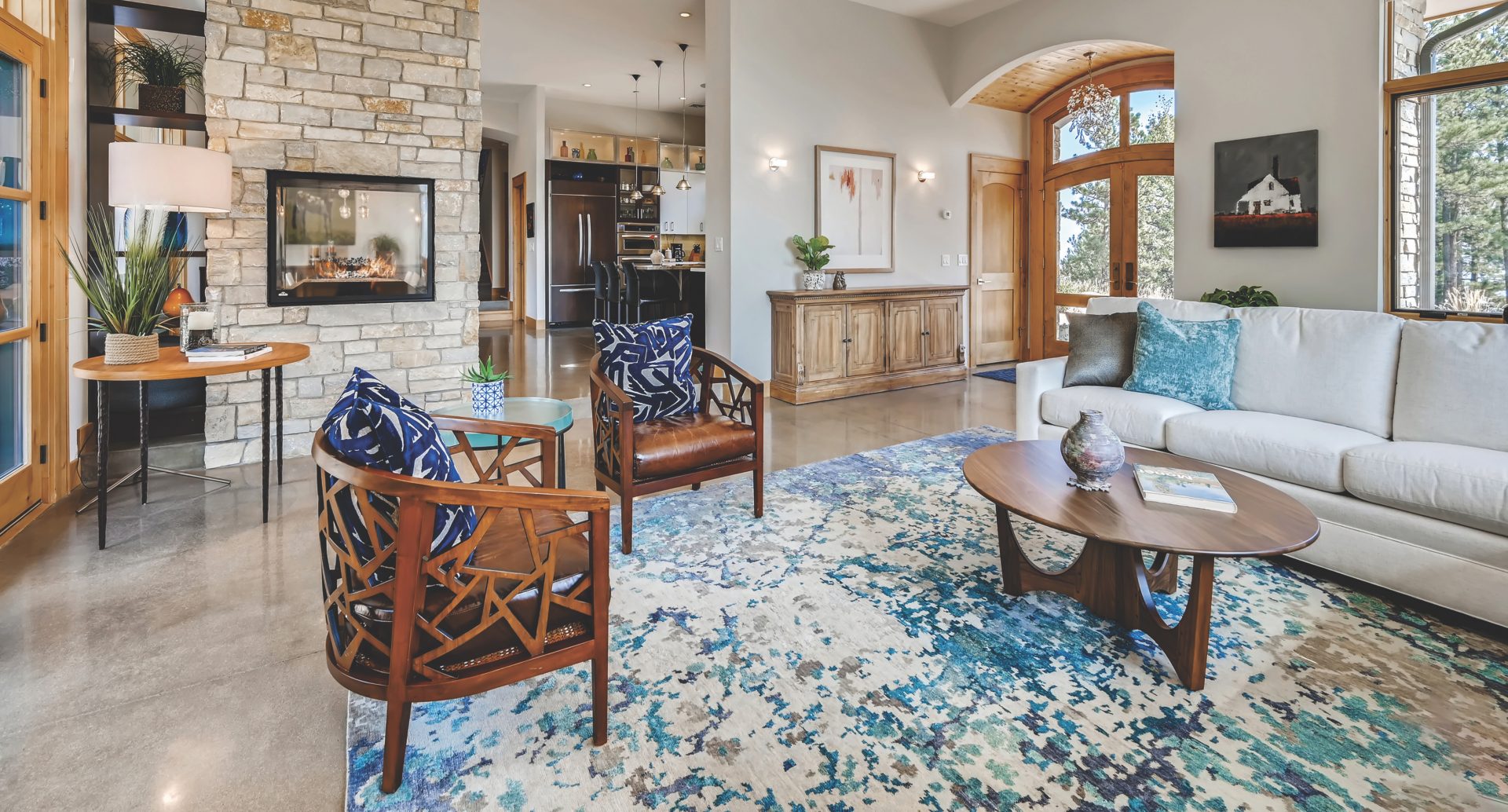A guide to landscape stones for outdoor areas
07 Sep 2021
Red sandstone inserts adorn this concrete paver walkway that winds past granite boulders
A Stone’s Throw to a Beautiful Yard
By Kate Jonuska
While plants demand the bulk of our attention and maintenance in a landscape, stunning yards and gardens are often created from stronger stuff—namely, rocks, stones and pavers. Stones can retain and control earth, build lasting paths and plant beds, and of course, create more outdoor living spaces for which Colorado is so renowned. As lovely as they are durable, stones serve many purposes in a landscape. Some are quarried right here in Boulder County and a little beyond, so your next landscaping project can support local businesses. Here’s a brief rundown on popular stones available for landscape use.
Sandstone
Our area is famous in rock-circles for two types of native sandstone: Lyons Red, quarried from the rock formation that runs from Lyons and the Flatirons down to the Garden of the Gods in Colorado Springs; and Colorado Buff, a slightly younger stone quarried west of Loveland and Fort Collins. True to its name, Lyons Red runs red and deep pink, while Colorado Buff is hued more neutrally with shades of tan, brown and gray.
“Most people think sandstone is soft, but the Lyons Red is 98% quartz, has a silica bond and you can polish it to full polish,” says Mike Loukonen, general manager and co-owner of Loukonen Brothers Stone in Lyons. “The Buff is a little softer, but both polish up beautifully for countertops and tabletops, or furniture, like benches.”
Indeed, sandstone is one of the most popular stones in local landscapes, used in decorative and retaining walls, patios and pathways. You can purchase precut sandstone in different thicknesses and sizes, making it ideal for creating lovely patterns and color combinations. For instance, the signature stone mix used in buildings on the University of Colorado Boulder campus is called the “CU Mix.” It contains Lyons and Colorado Buff sandstone, as well as lichen-covered moss rock and other natural stones.
Sandstone does require a little maintenance, as botanic acids produced by some trees can discolor it over time. “You can get off the biggest percentage with a pressure washer,” Loukonen says of the discolorations, “but to do it right, also put a good penetrative sealer on the sandstone. That will limit the botanic acid from turning it black.”
Bluestone
Colored in deep blues and grays, bluestone is a stunning choice that’s often paired with more modern architecture—and higher-budget projects, since the stone is less common and quarried from farther away. The two largest bluestone quarries are in Pennsylvania, where the deposits are sandstone, and Arkansas, where the deposits are limestone. Both can be used similarly to local sandstone in projects throughout the yard, including benches and tabletops. Though bluish-gray colors are the predominant hues, bluestone variations of green, red and brown can also be found.
Concrete Pavers
While sandstone may be the most all-around used stone, concrete pavers are another incredibly popular choice—and for good reason.
“Stone is expensive,” says Paul Hartman of Changing Landscapes, who explains that manmade concrete products are durable and much better looking than some would expect. “For a more contemporary look, new block walls have some interesting lines to them, or you can go with a tumbled wall. Basically, these are concrete blocks that have been tumbled to break up the sharp edges, so the wall looks like it’s been there a while.”
Available in myriad sizes and shapes, concrete pavers create excellent mosaic patios and durable footpaths. And since they’re often interlocking, they’re very easy to work with, Hartman says. Paver manufacturers also sell preassembled kits to create freestanding walls, pillars and fire pits—projects that would be much more difficult, or even impossible, with sandstone.
Moss Rock
Moss rock has moss and lichen growing on its surface, making it a great choice for folks with a more rustic aesthetic. While available in small scale, such as in the CU Mix, moss rock can also be large boulders. These stones thrive in shade and moisture, making them perfect for pools, ponds and water features.
“I like to integrate moss rock boulders into larger walls here and there,” Hartman says, “which makes an interesting mixed look, something really eye-catching.”
Limestone
This durable stone is an excellent choice for walkways and patios because of its velvety feel underfoot. The stone can be cut into a wide variety of shapes and sizes, and the stones are slip-resistant. Make sure limestone is installed correctly, however, to protect it from freeze and thawing cycles.

